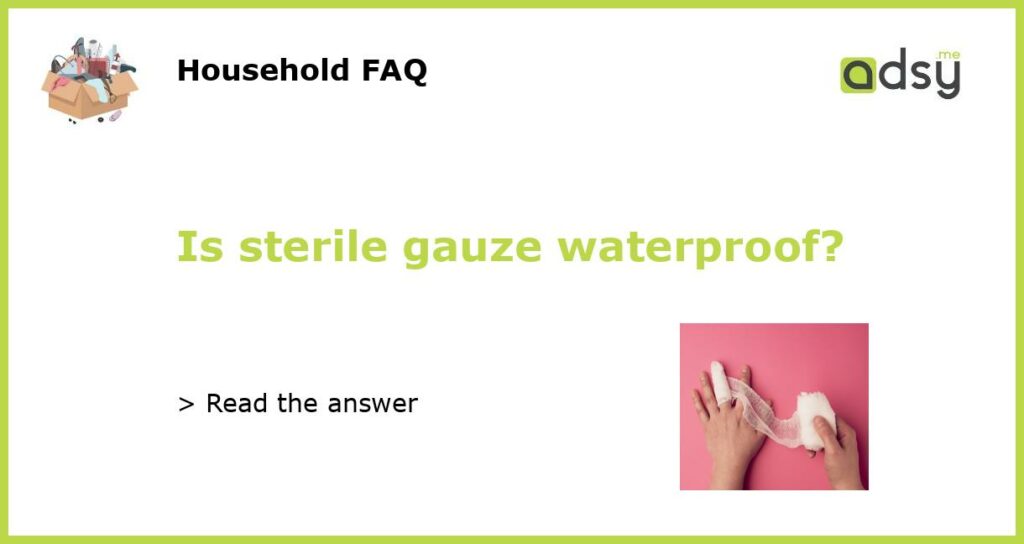Yes, sterile gauze is waterproof
Sterile gauze is a widely used medical product that is commonly used to dress wounds and protect them from infection. It is made of woven cotton material that is absorbent and allows for the proper flow of air. While sterile gauze is designed to be breathable and allow moisture to escape, it is not waterproof. The material is not treated with any substances that would make it resistant to water or other liquids.
When using sterile gauze, it is important to keep in mind that it is not meant to be used as a waterproof barrier. If you are looking for a waterproof dressing or barrier, there are other products available on the market specifically designed for that purpose. It is important to consult with a healthcare professional to determine the best type of dressing for your specific needs.
Why is sterile gauze not waterproof?
The primary reason why sterile gauze is not waterproof is that it is made of woven cotton material. Cotton is a natural fiber that is absorbent and allows for the flow of air. This property is important in wound care as it helps to promote healing by allowing oxygen to reach the wound and preventing the buildup of moisture. However, this absorbent nature also means that cotton is not resistant to water or other liquids.
In addition to the properties of the cotton material itself, sterile gauze is not treated with any substances that would make it waterproof. The purpose of sterile gauze is to provide a clean and sterile environment for the wound to heal, not to create a waterproof barrier. Other materials, such as plastic or silicone-based dressings, are used for waterproof or moisture-resistant applications.
When should sterile gauze be used?
Sterile gauze is commonly used in a variety of medical and first aid applications. It is often used to dress wounds, both large and small, as it provides a clean and sterile barrier between the wound and the environment. Sterile gauze can also be used to apply medication or ointments to a wound, as it helps to keep the area clean and prevent the spread of infection.
Sterile gauze should be used when there is a need for a breathable dressing that allows the wound to heal while providing protection and preventing infection. It is important to follow proper wound care protocols and consult with a healthcare professional for specific instructions on how to properly use sterile gauze.
What are alternatives to sterile gauze for waterproof applications?
If a waterproof dressing is needed, there are several alternatives to sterile gauze that can be used. One option is to use a waterproof adhesive dressing or bandage. These dressings are typically made of plastic or silicone-based materials that are specifically designed to create a waterproof barrier over the wound. They are often transparent, allowing for easy monitoring of the wound without the need to remove the dressing.
Another alternative is the use of waterproof wound covers or protectors. These products are typically made of waterproof materials with adhesive edges that create a seal around the wound. They are designed to keep the wound dry and protect it from water and other liquids during activities such as showering or swimming.
In conclusion
Sterile gauze is not waterproof. It is made of woven cotton material that is absorbent and allows for the flow of air. While it is commonly used in wound care to provide a clean and sterile barrier, it is not meant to be used as a waterproof dressing or barrier. If a waterproof dressing or barrier is needed, there are other products available on the market specifically designed for that purpose. It is important to consult with a healthcare professional to determine the best type of dressing for your specific needs.






